Latvijos legionieriai
Po vokiečių ginkluotųjų pajėgų puolimo Rytų fronte ir pralaimėjimo Stalingrade 1942/1943 m. žiemą vokiečiai pajuto poreikį formuoti karinius dalinius iš okupuotų Europos šalių gyventojų. 1943 m. sausio 23 d. A. Hitleris žodžiu įgaliojo H. Himlerį suformuoti Latvijos SS savanorių legioną. A. Hitlerio rašytinis įsakymas dėl legiono formavimo buvo išsiųstas 1943 m. vasario 10 d. ir skambėjo taip: „Įsakau sukurti Latvijos SS savanorių legioną. Dalinių dydis ir tipas priklauso nuo turimų Latvijos vyrų skaičiaus.“
Nuo 1943 m. kovo iki 1944 m. rugsėjo Latvijoje vyko kelios mobilizacijos kampanijos. O 1944 m. liepą paskelbus visuotinę mobilizaciją, jai buvo patraukti visi 1906–1928 m. gimę vyrai. Mobilizacija į legioną 1944 m. rugsėjį ir spalį vyko ir Kurše. Iš pradžių griežčiausia bausmė už mobilizacijos vengimą buvo iki šešių mėnesių laisvės atėmimo. 1943 m. lapkričio 24 d. buvo įsteigtas specialusis karo teismas, kuriame taip pat buvo numatyta mirties bausmė, tačiau 1944 m. vasarą Berlyne buvo priimtas sprendimas, pagal kurį kiekvienas, kuris per 48 valandas nepasiduos mobilizacijai, gali būti sušaudytas. Legione buvo palyginti nedaug tikrų savanorių, o jų dalis neviršijo 15–20 %. Tačiau konkrečiomis istorinėmis aplinkybėmis nemaža dalis legionierių savo buvimą legione suprato kaip kovą už Latvijos nepriklausomybės atkūrimą.
Iš pradžių 15-oji ir 19-oji Latvijos SS savanorių divizijos kovojo Rusijoje, tačiau 1944 m. liepą, po sunkių kovų, atsitraukė į Latviją. 19-oji Latvijos divizija tęsė kovas Vidžemėje, o karo pabaigoje – Kurše, o 15-osios Latvijos divizijos daliniai, patyrę didesnius nuostolius, buvo išsiųsti reformuoti į Vokietiją, kur kovojo iki 1945 m. gegužės mėn. Legiono 15-osios ir 19-osios divizijų vadai buvo vokiečiai, o divizijos štabą sudarė vokiečių karininkai. Aukščiausias Latvijos karininkas Legione buvo Latvijos SS savanorių legiono generalinis inspektorius generolas leitenantas Rūdolfas Bangerskis, tačiau jo teisės buvo labai apribotos. Iš viso Antrojo pasaulinio karo metu Vokietijos ginkluotųjų pajėgų gretose kovojo apie 110 000–115 000 Latvijos kareivių, apie 30 000–50 000 iš jų žuvo mūšio laukuose.
Po Antrojo pasaulinio karo vykusiuose tarptautiniuose Niurnbergo procesuose 1946 m. SS buvo paskelbta nusikalstama organizacija, pripažįstant, kad tai taikoma „asmenims, priklausantiems šiai organizacijai, kurie asmeniškai dalyvavo nusikaltimų daryme, tačiau netaikoma asmenims, kuriuos valstybė privertė tapti jos nariais taip, kad jie neturėjo kitos išeities, ir jei šie asmenys nedalyvavo nusikaltimuose“, ką galima priskirti daugumai Latvijos legionierių. Iki šeštojo dešimtmečio pradžios daugelis buvusių legionierių emigravo iš Vokietijos į Didžiąją Britaniją, Australiją, JAV, Kanadą ir kitas pasaulio šalis.
Daugiau informacijos šaltinių
Neiburgs, U. (Latvijos okupacijos muziejus) 2017. Latvijos legionas ir kovo 16-oji. Prieinama: http://okupacijasmuzejs.lv/lv/aktualitates/latviesu-legions-un-16-marts-356/ [žiūrėta [2021-05-06].
Jūsų komentarai
Sveiki. Ačiū už komentarą. Šiame puslapyje stengiamasi informaciją pagrįsti konkrečiais šaltiniais, tyrimais, prisiminimais, o šiuo atveju nurodomas konkretus šaltinis, iš kurio informacija buvo parengta. Jei turite kitų skaičių ir faktų ar žmonių prisiminimų minėta tema, pasidalykite šia informacija su mumis, nurodydami šaltinį. Su pagarba:
Sveiki, kaip ar kur galima sužinoti, ką kažkas nuveikė Antrojo pasaulinio karo metu? Ar jis buvo karys, ar latvių legionierius, ar dar kažkas? Tuo metu gyveno Rygoje.
Nekalbu latviškai, tad prašau atleiskite, jei koks nors neteisingas vertimas. Sveiki, Agris Purviņš, kreipiuosi į jūsų komentarą. Tačiau aš užtikrintai tikiu, kad latvių legione buvo apie 100 000 karių. Dėl aukų nesu tikras. Pats latvių legionas susideda ne tik iš 15-osios ir 19-osios SS-Waffen grenadierių divizijų. Įtrauktas buvo Flako batalionas arba brigada, jei gerai pamenu, taip pat latviai liuftvafėje, kurie tarnavo lakūnais ir lakūnų antžemine įgula. (Luftwaffen-Legion Lettland) Be to, į latvių legioną taip pat priklausytų pagalbiniai darbuotojai ir policijos padaliniai, kurie kartu sudarytų visus latvius. Vieni legioną apibrėžia kaip tik du SS dalinius, kiti – kaip visas Latvijos pajėgas vokiečių armijoje. Šaltinio kol kas neturiu, bet maždaug po savaitės ar dviejų pateiksiu ir pateiksiu informaciją apie kitus dalinius, bet jaučiuosi užtikrintai, kad sutarsiu dėl Latvijos karių skaičiaus vokiečių armijoje, vermachte ar SS.
Sveiki! Ar kas nors turi ką pasakyti, ar kas nors turi informacijos? Būčiau dėkingas! Ieškau naujienų apie Ati Šnēbergą! Prašau, jei kas turi idėjų kur dar ieškoti. ar kokios naujienos... Šnēbergs Atis - gimęs 1922 12 08. Ilūkstės apr Laucesės parapija. - mobilizuotas 1943 06 26 - pirmasis tarnybinis dalinys - 1 batalionas, 1 pėstininkų pulkas, 2 brigada, latvių legionas - pirmasis tarnybos laipsnis - eilinis - 1943 08 10 išsiųstas į instruktorių kursus - 1943 10 07 įrašytas į 2-ąją brigadą 1-091 pėst. seržantas - 1944 01 05 išsiųstas į karininkų kursus Bad Telce, Vokietijoje - 1944 05 01 pakeltas į garbės seržantus - 1944 09 30 įrašytas į 1 batalioną, 42 grenadierių pulką, 19 diviziją (tas pats dalinys prieš 11741 kursą sužeistas). 1944 11 10 išsiųstas į 15 divizijos atsargos brigados sveikatos atkūrimo kuopą - 1944 11 14 atleistas iš kuopos (mirė?) - 1944 12 21 pakeltas į puskarininkį.
Susijusi laiko juosta
Susijusios vietos
Paminklas žuvusiems Latvijos legiono kariams ir nacionaliniams partizanams
Įsikūręs Lubanos naujosiose kapinėse Indrani parapijoje.
Apžiūrėti galima žuvusių Latvijos legiono karių ir nacionalinių partizanų atminimo vietą.
Memorialas atidengtas 1992 m. liepos 25 d. Atminimo akmenį sukūrė Andris Briezis.
Prasidėjus Atbudimui, 1990 m. spalį žmogaus teisių grupės „Helsinkis 86“ narys Kārlis Doropolskis gavo valdžios leidimą pradėti perlaidoti 1944 m. vasarą Lubanoje žuvusius ir palaidotus Latvijos legionierius, taip pat vėlesniuose mūšiuose su sovietų okupacine kariuomene ir saugumo institucijomis žuvusius nacionalinius partizanus bendruose masiniuose kapuose, kurie buvo įrengti naujose Lubanos kapinėse. Iš viso masiniuose kapuose buvo palaidoti 26 žuvę legionieriai ir nacionaliniai partizanai.
Latvijos legionierių ir Nepriklausomybės kare žuvusiųjų palaidojimai
Įsikūręs Cesvainės Ķinderų kapinėse.
Galima apžiūrėti granito atminimo akmenį Latvijos legionieriams, atidengtą 1997 m. birželį brolijos kapinėse, taip pat rasti ir apžiūrėti atskirus Nepriklausomybės kare žuvusiųjų palaidojimus.
Kapinėse įrengta informacinė lenta su žuvusiųjų memorialų ir laidojimo vietų schema:
1. Latvijos legionierių kapinės 1943–1945 m.
2. Jēkabs Markovs 1883 02 08-1917 08 08. 8-ojo Valmieros latvių pulko šaulys
3. Arvīds Alberts Strads, „Žaliųjų“ partizanų vadas, 1894 09 22-1919 04 05. Pirmasis leitenantas
4. Harijas Lezons 1914 03 18-2003 01 19. kapitonas
5. Jānis Purēns 1887 11 15 - 1918 11 18. Lāčplės karo ordino kavalierius.
Lestenės brolių kapinės
Įsikūręs Tukumo rajone, Lestenėje, šalia bažnyčios.
Masinio kapo kūrimas Lestenėje pradėtas 1998 m. Tai antros pagal dydį karinės kapinės Latvijoje, kuriose palaidota daugiau nei 1300 Latvijos legionierių. Tik atkūrus Latvijos Respubliką atsirado galimybė perlaidoti Antrajame pasauliniame kare žuvusius Latvijos karius iš įvairių vietų.
Latvijos legionas buvo Vokietijos armijos kovinis dalinys, suformuotas daugiausia iš neteisėtai mobilizuotų Latvijos gyventojų. Kareiviai savo buvimą legione suvokė kaip kovą už Latvijos nepriklausomybės atkūrimą, nepaisant to, kad ji vyko Vokietijos ginkluotųjų pajėgų gretose, o Vokietija buvo okupavusi Latviją. Nebuvo jokios kitos karinės jėgos, kuri galėtų atidėti sovietų okupacijos sugrįžimą. Latvijos legionieriai kovojo prieš Raudonąją armiją, kuri likvidavo Latvijos nepriklausomybę, sunaikino jos armiją ir įvykdė nusikaltimus prieš civilius gyventojus. Vokietijos armijos gretose kovojo apie 110 000–115 000 kareivių, apie 30 000–50 000 iš jų žuvo mūšio laukuose.
Šiais laikais Lestenėje galite aplankyti Brolių kapą, šalia kurio stovi Lestenės bažnyčia. Tai išskirtinis baroko sakralinio meno pavyzdys. Senovinėje bažnyčios smuklėje galite susipažinti su paroda, skirta Latvijos legiono istorijai. Centrinį brolių kapo atvaizdą „Tėvynė – Motina – Latvija“ sukūrė skulptorė Arta Dumpė. Netoliese yra Lestenės dvaras, kuris iki Antrojo pasaulinio karo priklausė Latvijos armijos generolui Mārtiniui Hartmaniui.
Ekskursijas po Lestenės bažnyčią galima užsisakyti pas Lestenės evangelikų liuteronų bažnyčios parapijos kunigą Inguną Kokiną, tel. +371 29993743.
Kuržemės įtvirtinimų gynėjų atminimo akmuo
Įsikūręs Tukumo rajone, A9 greitkelio pakraštyje, 500 m nuo posūkio į Lesteni Rygos kryptimi.
Memorialas buvo įkurtas 1991 m. netoli Rumbu namų, kurie buvo aktyvių karo veiksmų vieta. Tai duoklė „Kuršo tvirtovės“ gynėjams, kovojusiems su Raudonąja armija Antrajame pasauliniame kare. Mūšiai buvo reikšmingi, nes laikinai sustabdė Raudonosios armijos įvykdytą visišką Latvijos okupaciją. Maždaug 300 000 latvių emigravo, bėgdami nuo sovietų režimo įvykdytų nusikaltimų prieš civilius gyventojus.
Antrojo pasaulinio karo pabaigoje Latvijos teritorijoje susiklostė savotiška situacija. Kurše buvo dislokuotos Vokietijos armijos pajėgos, kurias Raudonoji armija bandė eliminuoti arba neleisti dalyvauti mūšiuose Rytų Prūsijoje ar aplink Berlyną. „Kuršo tvirtovė“ yra dažniausiai vartojamas terminas, apibūdinantis karo veiksmus Kurše nuo 1944 iki 1945 m. „Kuršo mūšis“ buvo Vokietijos armijos kova, siekiant atremti didžiulius Raudonosios armijos išpuolius. Kuršo tvirtovė nustojo egzistuoti netrukus po Vokietijos kapituliacijos.
Šiandien galite aplankyti memorialą ir poilsio vietą, kuri buvo populiari tarp Latvijos legionierių nuo pat Latvijos nepriklausomybės atkūrimo.
Paminklas Pienavos Kalėdų mūšių aukoms
Įsikūręs Tukumo rajone, A9 greitkelio pakraštyje, maždaug už kilometro nuo Pienavos Liepojos kryptimi.
Memorialas yra Trečiojo Kuršo mūšio, arba Kalėdų mūšio, vietoje, vykusio 1944 m. Antrojo pasaulinio karo pabaigoje Latvijos teritorijoje susidarė unikali situacija. Kurše buvo vokiečių armijos pajėgos, kurias Raudonoji armija bandė eliminuoti arba neleisti dalyvauti mūšiuose Rytų Prūsijoje ar aplink Berlyną. „Kuršo tvirtovė“ yra dažniausiai vartojamas terminas, vartojamas apibūdinti mūšius Kurše nuo 1944 iki 1945 m. „Kuršo mūšis“ buvo vokiečių armijos karinės operacijos, skirtos atremti didžiulius Raudonosios armijos išpuolius. Kuršo mūšiuose aktyviai dalyvavo ir Latvijos legionieriai.
Šiandien galite aplankyti memorialinę vietą. Atviri vietovės laukai be seniausių pastatų yra karo liudininkai.
More mūšių muziejus
Muziejus yra Morėje, V319 greitkelio pakraštyje. Jis skirtas 1944 m. rudenį vykusiems Morės mūšiams tarp Raudonosios armijos ir Vokietijos armijos Latvijos legiono. Parodoje eksponuojamas mūšio lauko maketas, ginklai, apdovanojimai, karių uniformos ir karinė įranga. Morės mūšių muziejų ir memorialinį parką įkūrė buvę Latvijos legiono kariai, dalyvavę Morės mūšiuose. Memorialiniame parke yra apkasų, žeminių ir mūšio laukų. Mūšiai Morės apylinkėse buvo tik dalis didelio masto Raudonosios armijos Baltijos puolimo operacijos, kurioje dalyvavo iš viso 900 000 karių ir daug karinės technikos vienetų. Morės apylinkėse buvo įrengta dalis Vokietijos armijos įtvirtinimų sistemos, kurioje Latvijos legionieriai sutrukdė Raudonajai armijai prasiveržti į Rygą. Tai leido Vokietijos armijai išvesti savo pajėgas iš Estijos ir išvengti pralaimėjimo. Raudonosios armijos vadovybė tikėjosi, kad priešo pasipriešinimas netoli Morės bus trumpalaikis, ir atkakliai tęsė nepasiruoštus ir nekoordinuotus puolimus, patirdama didelių nuostolių. Vietos pranašumai ir Latvijos legionierių koviniai pajėgumai suvaidino svarbų vaidmenį tolesnėje karo eigoje. More yra Latvijos legionierių brolių kapinės ir Raudonosios armijos karių kapinės.
Raudonosios armijos brolių kapinės More mieste
Raudonosios armijos karinės kapinės yra pagrindinio kelio per Morę pakraštyje. Jose palaidoti apie 2000 karių, žuvusių per Morės mūšį. 1974 m. kapinės buvo sutvarkytos ir atidengtas skulptoriaus B. Grīslės paminklas.
Kuržemės tvirtovės muziejus Zante
Bus atidaryta nuo gegužės 1 d.
Lestenės brolių kapinės, memorialinė ekspozicija ir bunkeris
Lestenės brolių kapinės yra Tukumo savivaldybėje, Lestenėje, šalia Lestenės bažnyčios. Brolių kapinių Lestenėje statyba pradėta 1998 m. Tai antros pagal dydį karinės kapinės Latvijoje, jose palaidota daugiau nei 1300 Latvijos legionierių. Tik atgavus nepriklausomybę atsirado galimybė perlaidoti Antrojo pasaulinio karo metu žuvusius Latvijos kareivius. Latvijos legionas buvo Vokietijos armijos kovinis dalinys, sudarytas daugiausia iš nelegaliai pašauktų latvių. Kareiviai savo buvimą legione laikė kažkuo, ką reikia padaryti norint atkurti Latvijos nepriklausomybę, nepaisant to, kad jie tarnavo Vokietijos ginkluotosiose pajėgose ir kad Vokietija buvo okupavusi Latviją. Latvijos legionieriai kovojo prieš Raudonąją armiją, kuri sunaikino Latvijos nepriklausomybę ir jos armiją bei vykdė nusikaltimus prieš civilius gyventojus. Vokietijos armijos gretose kovojo nuo 110 000 iki 115 000 kareivių, o apie 30 000–50 000 iš jų niekada nepaliko mūšio lauko. Brolių kapinių pagrindinę temą „Tėvynė – Motina – Latvija“ sukūrė skulptorė Arta Dumpė. Kitoje kelio pusėje, buvusiame smuklėje, įrengta ekspozicija, skirta Latvijos legiono istorijai. Šalia jos Latvijos karininkų asociacijos vyrai, vadovaujami kapitono Jānio Slaidinio, pastatė požeminį bunkerį, kuriame parodyta, kaip kareiviai ir karininkai gyveno fronto linijose.
Paminklas pasipriešinimo judėjimo dalyviams Stompakyje
Įsikūręs 15 km nuo Balvių, Viljakos kryptimi, dešinėje kelio pusėje.
Matomas atminimo ženklas.
2011 m. rugpjūčio 11 d., minint Latvijos laisvės kovotojų atminimo dieną, Balvu–Viliako plento pakraštyje priešais Stompakų pelkę buvo atidengtas pasipriešinimo judėjimo dalyvių memorialas, skirtas Pēterio Supės tautinių partizanų, žuvusių 1945 m. kovo 2 ir 3 d. mūšiuose, atminimui. Liepos pabaigoje į paminklo pamatus buvo įkasta kapsulė su žinia ateities kartoms. Kapsulėje įdėtas dokumentas su 28 tautinių partizanų, žuvusių 1945 m. kovo 2 ir 3 d. mūšiuose, vardais ir pavardėmis.
„1945 m. vasarį Stompakų pelkės salose, kurias žmonės pradėjo vadinti Stompakų pelkės salelėmis, 2 km nuo Balvų–Viliakos plento, buvo įkurta didžiausia Latvijoje nacionalinė partizanų stovykla, kurioje 22 apkasuose gyveno 360 žmonių. Tarp jų buvo ir legionierių, kurie, legiono divizijai atsitraukiant, su visais ginklais buvo pasilikę tėvo namuose. Siekdami sunaikinti partizanus, 1945 m. kovo 2 d. dviejų Čekos batalionų kareiviai kartu su naikintojais, kurių ginkluotėje taip pat buvo keturi minosvaidžiai, puolė apkasus. Kovos tęsėsi visą dieną, partizanai atkakliai priešinosi, o puolėjai patyrė didelių nuostolių, todėl negalėjo užimti stovyklos ir sunaikinti partizanų. Mūšyje žuvo arba nuo sunkių sužalojimų mirė ir 28 Stompakų pelkės gyventojai. Kitą naktį partizanai mūšiu „praėjo apgultis ir liko nenugalėtas“ prasiveržė pro stovyklas – taip rašė Zigfrīds.“ Apdovanojimų skyriaus Nacionalinio pasipriešinimo judėjimo dalyvių reikalų komisijos pirmininkas Berkis rašo apie Stompako mūšį.
Atminimo ženklas Arvydui Blumenthalsui „Krokodilas“
Krokodilo paminklas yra Dundagoje, Talsų ir Ernesto Dinzbergos gatvių sankirtoje. Dvi tonas sveriantis paminklas Arvydui ir kitiems Kuržemės galiūnams buvo pastatytas 1995 m. Dundagoje. Skulptorius – Olegas Skarainis. Netoli Dundagos pilyje taip pat veikia paroda, skirta Arvīdui Blūmentalui.
Ant akmenų krūvos stovintis „Krokodilas“ pasakoja apie ilgą Dundadzo vyro kelionę po Antrojo pasaulinio karo ir staigią pasaulinę šlovę, jam tampant vienu iš šiuolaikinio pasaulio nuotykių ieškotojų prototipų. Kai 1986 m. „Krokodilas Dandis“ pasirodė kino ekranuose, jis greitai sulaukė pasaulinės sėkmės. Žmonėms susidomėjus filme vaizduojamais personažais, tapo aišku, kad tokie spalvingi personažai negali būti išgalvoti! Netrukus paaiškėjo, kad pagrindinio veikėjo prototipas yra australas – ir kad tai yra australų medžiotojas Rodnis Anselis arba latvių berniukas Arvīds Blūmentāls.
Arvīds Blūmentāls gimė 1925 m. Būdenų namuose, Dundagos parapijoje. Antrojo pasaulinio karo metu jis įstojo į 25-ąjį Abavos policijos batalioną – statė pozicijas Liepojos šiaurėje ir dalyvavo antipartizaninėse operacijose Ukrainoje. Batalionui tapus Latvijos legionu, jis dalyvavo jo mūšiuose ir buvo kelis kartus sužeistas. Karo kovų metu jis atsidūrė Vokietijoje, iš kur pabėgo į Amerikos kontroliuojamą teritoriją. Po mokymų Altferfrado žemės ūkio mokykloje 1947 m. įstojo į Prancūzijos užsienio legioną ir dalyvavo pirmajame Indokinijos kare, po kurio 1951 m. persikėlė į Australiją ir pradėjo medžioti šiaurinio Kvinslando atogrąžų miškuose. Jis pats teigė, kad per savo gyvenimą sumedžiojo nuo 10 000 iki 40 000 krokodilų. Kai Australijos vyriausybė uždraudė medžioklę, jis persikėlė į opalų kasyklą Kamberpedio miestelyje, vedė ir įsikūrė kasyklos oloje, kurią pavadino „Krokodilo guoliu“. Arvydas Blumenthalis mirė 2006 m. spalio 13 d. Per savo gyvenimą apie jį buvo sukurta keletas dokumentinių filmų, jo namai, Krokodilo lizdas, buvo filmo „Pašėlusis Maksas už perkūno kupolo ribų“ veiksmo vieta, o jis pats tapo gyva legenda.
Sovietų partizanų būrio „Raudonoji strėlė“ atminimo akmuo
Sovietų partizanų dalinys buvo suformuotas 1944 m. rugsėjo 30 d., kai 19 vokiečių 283-iojo policijos bataliono kareivių, vadovaujamų Vladimiro Semenovo, dezertyravo su ginklais. Batalionas buvo suformuotas 1943 m. iš Latgalos regiono savanorių ir dalyvavo vokiečių okupacinės valdžios antipartizaninėse operacijose Latvijos ir Baltarusijos teritorijoje.
Šis dalinys buvo pavadintas „Semjonovo daliniu“ jo vado garbei ir tik karo pabaigoje priėmė „Raudonųjų strėlių“ pavadinimą, kurį po Antrojo pasaulinio karo jau skleidė sovietinė propaganda. Iki 1944 m. gruodžio mėn. dalinyje buvo 300–400 partizanų. Dauguma jų buvo pabėgę Raudonosios armijos kareiviai, buvę legionieriai, įskaitant kovotojus, likusius po generolo Kurelio grupės sunaikinimo. Nors tuo metu Kuržemėje veikė daug Raudonosios armijos žvalgybos grupių, jos vengė glaudaus bendradarbiavimo, nes partizanų būrio vado ir jo pagrindinio branduolio – vokiečių policijos gretose – veikla buvo pernelyg įtartina. „Raudonosios strėlės“ veikla buvo gana prastai organizuota ir labiau orientuota į karo pabaigos laukimą. Savo veiklos metu ji vykdė platų vietos gyventojų terorizavimą.
Vladimiras Semionovas, pirmasis „Raudonosios strėlės“ vadas, nuskendo 1944 m. gruodžio 10 d. naktį, bandydamas iki kelių perbristi patvinusią Abavos upę. Jo kūnas buvo rastas ir palaidotas tik 1945 m. pavasarį. Jis buvo perlaidotas Kuldygoje 1961 m.
Paminklas stovi „Raudonosios strėlės“ ir kitų toje vietovėje buvusių partizanų stovyklų (apie 50–70 žmonių) vietoje, kurias 1945 m. kovo 7 d. apsupo ir bandė sunaikinti vokiečių kariuomenė.
Baltasis kryžius – paminklas Antrojo pasaulinio karo metu žuvusiems kariams
Įsikūręs dešinėje P79 greitkelio Ērgliai–Koknese pusėje, 3 km nuo Ērglių, priešais Brolių kapines .
Baltasis kryžius yra Antrojo pasaulinio karo aukų memorialas, jis buvo pastatytas Ērgliuose 1995 m. gegužės 8 d., pašventintas liepos 30 d. Ant kryžiaus yra memorialas su užrašu „Žuvusiems Antrojo pasaulinio karo kariams“.
1994 metais ten buvo antkapinis paminklas su užrašu „Prisimename žuvusiuosius“.
Pasakojama, kad LTK sulygintose senose švedų kapinėse buvo palaidoti vokiečių armijos latvių karininkai. Nebuvo atlikta jokių tyrimų, todėl nėra ir dokumentinio patvirtinimo.
Kapitono J. Ozolo artilerijos pulkui atminti skirtas paminklas
Džūkstės valsčiuje, maždaug už kilometro nuo Kuržemės gynėjų atminimo vietos, Rygos–Liepojos plento pakraštyje pastatytas atminimo ženklas 3-iosios divizijos 7-ajai baterijai, kuriai vadovavo majoras Janis Ozols.
Per Trečiąjį Kuršo mūšį, vykusį 1944 m. gruodžio 23–31 d., majoro J. Ozolo III divizija atrėmė priešo pranašumo atakas ir neleido frontui prasiveržti. Šiame mūšyje majoras J. Ozolas pademonstravo asmeninį didvyriškumą ir vadovavimo sugebėjimus.
Jānis Ozols (1904–1947) buvo Latvijos armijos ir Latvijos legiono karininkas, Armijos Garbės ritinio sagties gavėjas, taip pat nacionalinis partizanas ir sovietų represijų auka.
Latvijos karo muziejus
Latvijos karo muziejus yra įsikūręs senamiestyje, netoli Laisvės paminklo, istoriniame gynybos pastate, vadinamame „Parako bokštu“. Muziejuje yra 11 eksponatų. Čia eksponuojami įvairūs ginklai, dokumentai, uniformos, apdovanojimai, ženkleliai ir kiti daiktai, pasakojantys apie kasdienį kareivio gyvenimą kare. Latvijos karo muziejus yra vienas seniausių muziejų Latvijoje. Jo ištakos siekia Pirmąjį pasaulinį karą. Muziejaus kolekciją daugiausia sudarė asmeniniai kareivių daiktai arba mūšio laukuose rasti daiktai. Latvijai atgavus nepriklausomybę, pagrindinis muziejaus tikslas tapo sukurti ekspoziciją apie Latvijos karo istoriją ir aktyvų gyventojų vaidmenį saugant savo žemę. 1937 m. muziejus buvo išplėstas ir techniškai buvo vienas moderniausių tuo metu Europoje. Parako bokštas buvo vienas iš Rygos įtvirtinimų bokštų. Kai kurie įrodymai siekia 1330 m., kai jis buvo minimas kaip „Smėlio bokštas“. Bokštas buvo sugriautas 1621 m., kai Rygą apgulė Švedijos armija. Tačiau 1650 m. buvo pastatytas naujas bokštas parakui ir ginklams laikyti. Nugriovus miesto įtvirtinimus, Parako bokštas išlieka vienu svarbiausių Rygos gynybos sistemos įrodymų.
Memorialas Bauskės gynėjams nuo sovietų okupacijos 1944 m. Šventosios Dvasios evangelikų liuteronų bažnyčios sode
Bauskės Šventosios Dvasios evangelikų liuteronų bažnyčios sode 1944 m. mūšių metu buvo palaidoti Bauskės gynėjai – Latvijos kariai. SSRS okupacijos metais čia buvo įrengtos vaikų darželio žaidimų aikštelės. 1996 m. lapkričio 9 d. bažnyčios sode buvo atidengtas skulptoriaus Mārtiņa Zaurso sukurtas atminimo akmuo. Po Latvijos legiono rankovės antsiuvu grubiai apdirbtame raudoname riedulyje iškaltas tekstas – raudonai baltas skydo atvaizdas – „Tegyvuoja jums Latvija! Bauskės gynėjams 1944 m.“ Atminimo akmuo pastatytas Latvijos nacionalinės karių asociacijos ir organizacijos „Daugavas Vanagi“ Bauskės skyriaus iniciatyva. Finansinę paramą taip pat teikė Bauskės miesto ir rajono savivaldybės. Šalia akmens stovi baltai dažytas medinis kryžius, po kuriuo pritvirtinta raudonai baltai raudonai dažyta legionierių skydo kopija, o dar žemiau – rausvo granito lenta su tekstu: „Čia ilsisi legionieriai, didvyriški Bauskės gynėjai, 1944.28.VII – 1944.14.IX“
Paminklas Jelgavos gynėjams nuo sovietų okupacijos 1944 m. Grėbnerio parke
1995 m. gegužės 8 d. atidaryta atminimo vieta 1944 m. liepos–rugpjūčio mėn. vykusių Jelgavos gynybinių mūšių prieš antrąją sovietų okupaciją dalyviams. Šio įvykio garbei vyko pamaldos Jelgavos Šv. Onos evangelikų liuteronų bažnyčioje ir vėliavomis išpuošta procesija per Jelgavą. Atminimo vietoje stovi netaisyklingos formos granito stela, kurioje iškaltas kryžius, įaugantis į kalavijo smaigalį. Šalia, kairėje, žuvėdros pavidalu išdėstytas nupjauto gretasienio formos granito luitas su užrašu „Jelgavos gynėjams 1944.28.VII-8.VIII“.
Karas Jelgavoje prasidėjo po to, kai 1944 m. liepos 27 d. sovietų kariuomenė užėmė Šiaulius Lietuvoje ir tęsė puolimą šiaurės kryptimi. Siekdamas atremti Raudonosios armijos puolimą, naujai paskirtas Jelgavos karinis vadas generolas leitenantas Johanas Flugbeilis paskelbė miestą „tvirtove“ ir visos turimos pajėgos turėjo būti panaudotos miesto gynybai. Iš pradžių Jelgavos gynėjų branduolį sudarė tik 15-osios Latvijos SS ginklų divizijos mokymo ir rezervo brigados, vadovaujamos pulkininko leitenanto Hermano Jurko, kariai ir keli nedideli vokiečių daliniai. Liepos 27 d. popietę sovietų 3-ioji oro armija pradėjo bombarduoti Jelgavą, atakuodama ne tik strateginius karinius taikinius mieste ir jo apylinkėse – geležinkelio stotį ir kelius, – bet ir padegdama kai kuriuos gyvenamuosius pastatus. Miesto pastatai ir civiliai nukentėjo nuo „Katiušos“ raketų sistemų, artilerijos ir minosvaidžių ugnies, kurią viena į kitą apšaudė abi kariaujančios pusės.
Liepos 28 d. sovietų 3-iojo gvardijos mechanizuotojo korpuso daliniai pradėjo puolimą miesto pietiniame pakraštyje, tačiau nesėkmingai. Liepos 30 d. rytą puolimą sustiprino 51-osios armijos 279-oji ir 347-oji šaulių divizijos. Nors Maskvos radijas kitą dieną pranešė apie miesto užėmimą, SSRS kariuomenei su pastiprinimu pavyko įsiveržti į miesto centrą, bet ne visiškai jo užimti. Dešinysis Lielupės upės krantas ir įtvirtintas tilto galas prie Driksos tilto liko Raudonosios armijos neužimti. Įnirtingos kovos vyko ir Jelgavos pilyje, kuri rugpjūčio pradžioje perėjo sovietų kontrolei. Raudonoji armija perkėlė į pilį patrankas ir iš jos langų apšaudė vokiečių ir latvių kareivių pozicijas Kalnciemo kelyje. Po to sekė vokiečių sunkiosios artilerijos kontruguotė, kuri visiškai sunaikino pilį. Rugpjūčio 4 d., gavę pastiprinimą iš Rygos, Jelgavos gynėjams pavyko laikinai perimti miesto kontrolę. Tačiau masinis sovietų puolimas privertė vokiečių ir latvių kareivius po trijų dienų palikti Jelgavą.
Latvijos legiono 2-ojo pasienio apsaugos pulko karių atminimo vieta Iecavos valsčiuje
Latvijos legiono 2-ojo pasienio apsaugos pulko karių atminimo vieta yra Iecavos savivaldybėje, šalia Iecavos–Baldonės plento tarp „Dietlavās“ ir „Būčās“ (namų pavadinimai).
Memorialas buvo atidarytas 1998 m., remiant Latvijos nacionalinei karių asociacijai ir Dauguvos vanagių asociacijos Iecavos skyriui. 2023 m. buvo pridėtas informacinis stendas su 2-ojo pasienio apsaugos pulko ir 1944 m. rugsėjo mėn. kovų su sovietų armija aprašymu.
Po Bauskės žlugimo 1944 m. rugsėjo 14 d. sovietų armijos daliniai, remiami tankų korpuso ir aviacijos, žygiavo Rygos ir Balduonės link. Tankų daliniai kirto Iecavos upę netoli rusų namų, nes tiltai buvo susprogdinti. Per oro antskrydžius Iecavai buvo visiškai sunaikintas Kalnos malūnas, smarkiai apgadinta bažnyčia, klebonija, spirito varykla ir pieninė, gyvenamieji pastatai buvo visiškai arba iš dalies sunaikinti.
Rugsėjo 15-16 d. naktį 2-asis pasienio apsaugos pulkas, vadovaujamas pulkininko leitenanto Jānio Jansono, atvyko iš Rygos į fronto tarpą netoli Grimų namų, esantį ant Jelgavos-Krustpilio geležinkelio linijos. Jiems teko susidurti su tankų daliniais, apginkluoti šaulių ginklais. Per keturias kovos dienas pulko kariai artimoje kovoje tankų „kumščiais“ sunaikino 20 sovietų tankų, iš kurių vien eilinis Plūksna sunaikino penkis, kapralas Sirmbārdis – du. Pulko nuostoliai buvo dideli: žuvo keturi karininkai, 24 instruktoriai ir kareiviai. Buvo sužeisti aštuoni karininkai, 161 instruktorius ir kareivis.
Susijusi istorija
Mūšiai Kuršo tvirtovėje netoli Lestenės
Pasakotojas aprašo savo įspūdžius apie mūšius Lestenės apylinkėse ir Latvijos 19-osios divizijos vaidmenį mūšiuose.
Latvijos legiono 42-ojo pulko kuopos vado Vernerio Preijerio prisiminimai apie Kuršo mūšius.
Kuršo tvirtovė buvo suformuota po Rygos žlugimo 1944 m. spalio 13 d. ir Rusijos proveržio į Kaliforniją spalio 10 d., taip nutraukiant sausumos eismą su Vokietija.
Neatpažinti kareiviai. Kovos karininko istorija.
Morės mūšis – tai Antrojo pasaulinio karo paskutiniojo etapo epizodas, turėjęs didelę reikšmę tolesnei karo eigai Latvijos teritorijoje. Morės mūšis – tai karo veiksmai, vykę nuo 1944 m. rugsėjo 25 d. iki spalio 5 d. Siguldos gynybos linijoje, Morės valsčiaus teritorijoje. Maždaug 12 km ilgio Siguldos gynybos linijos apkasuose Latvijos legiono 19-osios divizijos kariai, 10 dienų kovoję sunkiuose mūšiuose, turėdami 10–15 kartų didesnę priešo persvarą, sustabdė Raudonosios/Sovietų armijos dalinių puolimą Rygos link.
Susitikimas su Arvidu Blumenthalsu – Krokodilas Haris Kamberpedijoje
Laikraštis „Australian Latvian“ išspausdino straipsnį apie susitikimą su Arvīdu Blūmentālu jo namuose Australijoje.
(Trumpas epizodas iš kelionės link Australijos centro ir vakarinės pakrantės šaknų kartu su Aivaru ir Benita Browne.)
Pilsblīdenės mūšis Roberto Ancano atsiminimuose
Robertas Ancansas (1919 m. lapkričio 11 d. – 1982 m. sausio 1 d.) buvo Latvijos legiono karininkas, Geležinio kryžiaus riterio kryžiaus ordino savininkas, dalyvavęs Pilsbidenės mūšiuose 1945 m. kovo 16 ir 17 d. Šeštasis Kuršo mūšis jau tęsiasi ketvirtą dieną. Anzānsas tarnavo Pilsbidenės apylinkėse, todėl gerai pažinojo šią vietovę. Anzano divizijos kryptį vėl nukreipia dar vienas fronto lūžis – 8 km gylio Raudonosios armijos įsiveržimas. Šiuose mūšiuose Anzánas sužeistas.
19-ojo artilerijos pulko vado kapitono Janio Ozolo sugebėjimai 3-iojo Kuršo mūšio metu
Kapitonas Jānis Ozols buvo Latvijos karininkas, Antrojo pasaulinio karo dalyvis, Trijų žvaigždžių ordino riteris, kurio artilerijos divizija neleido pralaužti fronto per Trečiąjį Kuršo mūšį.
Legionieriaus Andrejaus Apsīčio palikimas Remtės girioje
Kuržemės miškuose kartkartėmis aptinkama Antrojo pasaulinio karo įrodymų, nes karo relikvijų ir istorinių senienų entuziastai labai dažnai lankosi Kuržemės miškuose ir laukuose su metalo detektoriais. 2021 metų pradžioje Salduso savivaldybės Remtės pusėje miške užkastoje šaudmenų dėžėje buvo rasti įvairūs dokumentai, patvirtinantys priklausymą Latvijos legiono 19-ajai divizijai, taip pat kareivio asmeniniai daiktai. Jie žemėje pragulėjo 76 metus.
III/19-ojo artilerijos pulko (2-ojo Latvijos) kapitono Janio Ozolo ataskaita apie 1944 m. gruodžio 24 ir 25 d. mūšius
Divizijos vadas kapitonas Jānis Ozols savo 1944 m. gruodžio 27 d. ataskaitoje 15-ojo (1-ojo Latvijos) SS artilerijos pulko vadui praneša apie 7-osios, 8-osios ir 9-osios baterijos pabūklų nuostolius gruodžio 24–25 d. mūšiuose Zvejniekių – Dirbos apylinkėse.
Alfredas Riekštinas - Riterio kryžiaus kavalierius
1945 metų pradžioje Kuršo tvirtovėje vis dar vyko įnirtingi mūšiai, kur latviai kovojo vokiečių armijos gretose. Vienas iš jų buvo Alfrēdsas Riekstiņšas 19-ojoje divizijoje. Už drąsą Riekstiņšas buvo apdovanotas Riterio kryžiumi ir įteiktas Remtės pilyje. Netrukus prieš kapituliaciją jis tapo leitenantu.




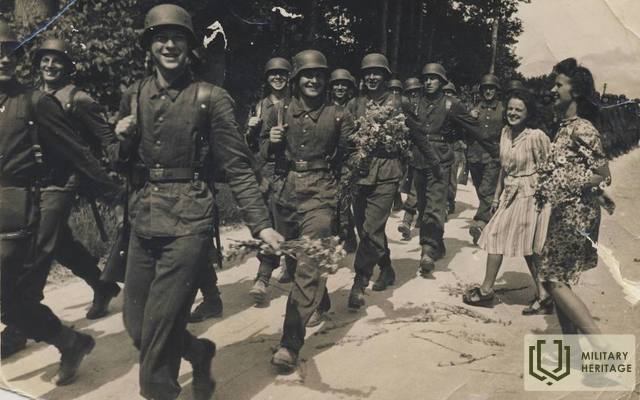
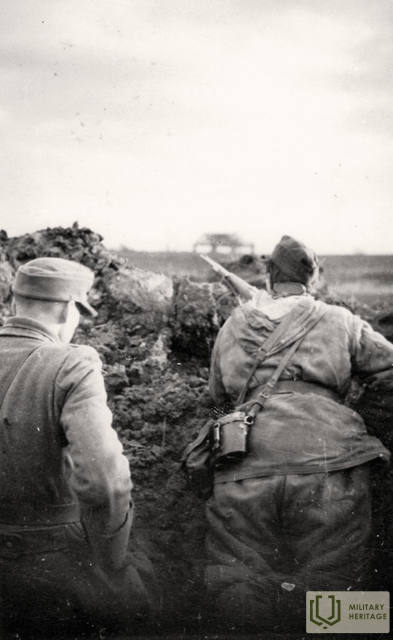
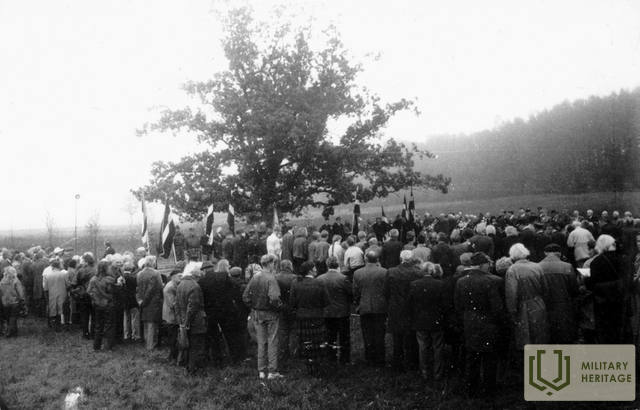

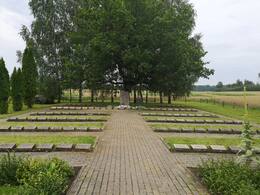
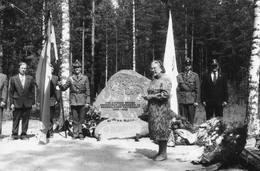
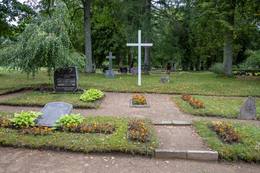
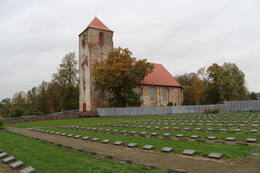

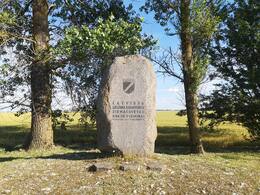
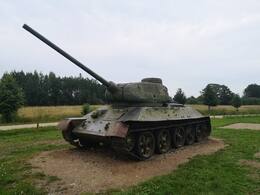
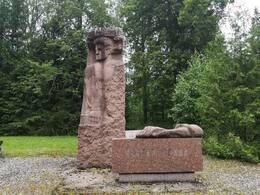
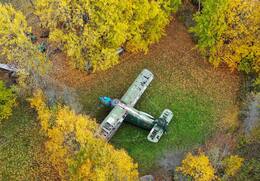
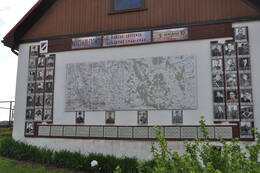
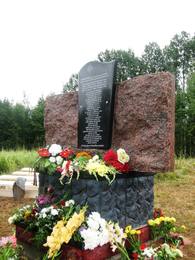
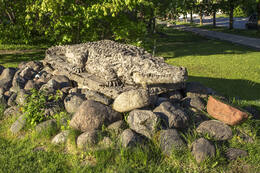
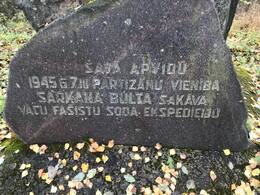
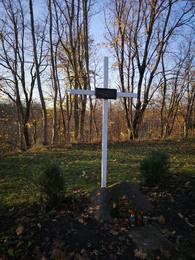
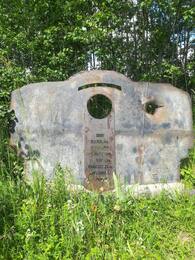

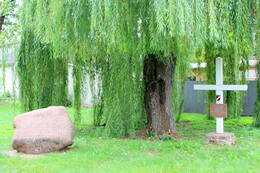
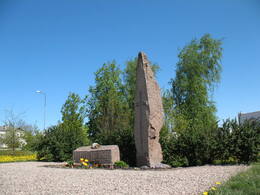

Ar tikrai teisingas šis teiginys: „Antrame pasauliniame kare kovojo apie 110 000–115 000 latvių karių, maždaug 30 000–50 000 iš jų žuvo mūšio laukuose.“? Man sunku patikėti, kad latvių karys vokiečių armijoje patyrė didesnių nuostolių nei Raudonojoje armijoje. 50 000 kritusių reiškia, kad nukrito beveik kas antras. Taip pat galima daryti prielaidą, kad bendras žuvusiųjų ir sužeistųjų skaičius yra 50 000, bet kaip apie žuvusiuosius? Pagarbiai Agris Purvins